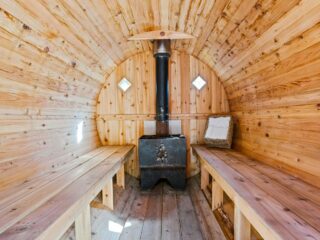
Metropolitan Denver is one of the oldest cities in the USA. A lot of the homes that are present to date were constructed during the World War II period. Buyers who are fond of history love the idea of owning a piece that can be traced to historic times. But purchasing a vintage home can come with a set of responsibilities and challenges.
Here are some things that you need to know before you invest in a historic home in Denver::
1. Home Inspection is a Critical First Step
When you’re buying a home in a historic neighborhood, there could be a lot of underlying issues. This could range from structural damage to mold growth and pest infestations. Although you could inspect the visible problems yourself, only professionals can detect issues like lead paint, lead pipes, and asbestos usage.
For instance, old homes usually had lead piping in the bathrooms. While the life expectancy of these pipes is around 100 years, the lead in the water can lead to serious health consequences.
If you don’t inspect the house, you wouldn’t know if you must invest in maintenance before moving.
2. Bathroom Remodeling Might be Necessary
Old homes often have plumbing issues. And this is an issue that leads to other issues like seepage in the walls, unruly smells, and mold growth.
Inspectors can help determine whether the pipes used in the bathroom are made of lead or polybutylene plastic pipes. The inspectors might even find the home lined with copper pipes soldered with lead.
If you’re buying a historic home, it is highly likely that you will have to hire Denver bathroom remodeling experts to replace the plumbing. Remodeling experts can also help you improve the bathroom’s look so it preserves its vintage-era look while proving functional.
These bathroom remodeling experts also have professional masons who know which materials to use. If you hire someone who is new to vintage houses, they might use cement that could damage older bricks, damaging the vintage look of the house.
3. You Have to Maintain Its Historic Character
Even though you have purchased and owned the house on paper, you are responsible for maintaining its architectural style and historic character.
If only the idea of a historic neighborhood attracts you, it’s better to steer clear of these houses. The reason is that historic homes need well-committed buyers to maintain their historic essence. When you seek historic houses, sellers will gauge your interest in preserving the home’s history. If you’re just someone with a fleeting interest, you might be wasting your time looking at these houses and putting up offers.
4. Check if You Need City Approval
If you’re purchasing a home in a historic district of Denver, you must know that the Denver Landmark Commission must approve any additions to the house. The approval process can be prolonged and tedious.

Additionally, when you seek approval, you must know that the commission will only approve designs compatible with the existing scale, size, and style architecture. You might even need to work with the Landmark Planning staff to ensure the changes preserve the original historic character.
Sometimes, you might even need permission to update roofing, windows, and doors. So, before purchasing, be prepared to handle the commitment.
5. Historic Homes Have Low Turnover
If you are ready to purchase a historic home in Denver, keep on the lookout for the listings. These homes come up for sale very rarely and sell very quickly. Wait for the right opportunity and put up your offer. It is recommended that you match the asking price because buyers are waiting for these gems to come on the market. If you bid too low, you would risk losing the deal.
When you have secured the house, get ready for a lot of foot traffic. Historic neighborhoods often have history buffs and tourists taking a walk, admiring the architecture. You might even get occasional visitors who want to see the house from the inside!
6. Historic Homes Are Expensive
Historic homes hold their value, so you might even have to pay more for a historic home than you would pay to get a relatively newly constructed home.
Additionally, when you have to maintain the house’s historic character, it means you must invest in its maintenance rather than modern, flashy additions to the house. They are also more costly and take longer if compliance processes are involved.
The costs involved in the maintenance of historic homes include:
- Pay for permits from the Denver Landmark Commission.
- Costs might add up further if the commission requires you to use similar materials for maintenance and construction projects.
- Labor costs are high because you need masons and workers who are experienced in projects concerning historic homes.
7. You Cannot Eliminate Damage
Many older homes have hardwood flooring that has signs of damage from over the years. This might include dents, scratches, and even stains. Many homeowners think that sanding can help remove these signs of damage. While sanding can help, excessive use of power tools on these surfaces can reduce their longevity and originality.
Although history buffs would suggest that you leave these damages as it is, if you still think they need repairs, sanding by hand will be better than with a machine.
Similarly, some older homes have plastered walls. Many inexperienced professionals might suggest replacing these walls with drywall if there are any signs of damage. But if you genuinely value history, you’ll know that plastered walls are way superior to drywall. They are sound-absorbent and resistant to water damage.
Final Words
When you become the owner of a historic home, you take up a great deal of responsibility to preserve a piece of history. However, even with all the hype around historic homes, make sure that you gauge their condition before you purchase them. This way, you’ll know what the home needs while you live in it.

Historic homeowners also need to seek a lot of approvals before they can take up projects, especially exterior projects or those that require an alteration to the house’s structure. However, even if they repair indoors, they must follow certain protocols to keep the house’s historic character intact.





